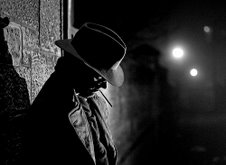The Telegraph(UK)
28 Aug 2008
Yuri Nosenko, who died on August 23 aged 80, was a KGB intelligence officer who defected to the West at the height of the Cold War; after initial doubts about his authenticity, the CIA came to consider him one of its most valuable, if troublesome, defectors.
Codenamed "Foxtrot" by the CIA, Nosenko was a KGB Second Chief Directorate (SCD) officer when he approached the CIA in Geneva in June 1962. He was in Switzerland as a member of the Soviet Union's disarmament delegation.
Nosenko offered to provide the Americans with information, saying that he hoped to defect some time in the future, and that he wished to acquire medication for his asthmatic daughter, Oksana; but his principal objective was to replace funds which he had misappropriated from the local rezidentura which he had then blown in a local nightclub.
Nosenko – the son of one of Stalin's ministers – was persuaded to continue working in the KGB, but in the meantime he made some significant disclosures. He revealed that the SCD had compromised a British official who had been caught in a honeytrap in Moscow while employed at the British embassy, and MI5 soon identified the suspect as an Admiralty clerk, John Vassall.
He also named the Canadian ambassador, John Watkins, as having been compromised in the same way, as well as a CIA officer, Edward Ellis Smith. All three allegations proved accurate. Nosenko added that he had heard that MI5 had been penetrated by the KGB at a high level.
After these initial contacts, Nosenko returned to Moscow, but he unexpectedly defected in Geneva during a second visit, in February 1964, having claimed to have reviewed the KGB file on President Kennedy's assassin, Lee Harvey Oswald.
The CIA's Counterintelligence Staff, however, spotted a number of significant contradictions in Nosenko's debriefings, including details of his career and even his rank, and became convinced that he was a "dispatched defector".
The issues at stake were considerable, because if Nosenko were a plant his insistence that the KGB had played no part in the assassination of President Kennedy could be considered equally bogus.
Another KGB defector, Anatoly Golitsyn, who had defected in 1961, had warned that the organisation would very likely seek to discredit him by sending to the West others armed with ingeniously-constructed cover stories to mislead Western intelligence agencies. Some professionals came to believe that Nosenko was one of these.
Accordingly, from April 1964 Nosenko was detained at a safe house in Maryland for nearly 18 months, on the authority of the US attorney-general, before being transferred to a cell-block specially constructed at the CIA's training facility at Camp Peary, in Virginia. He remained there, under continuous and hostile interrogation, until October 1967.
A year later a report sponsored by the CIA's Office of Security concluded that Nosenko was a genuine defector, and he was given an apology for his treatment, $137,062 in compensation and a contract as a consultant.
The controversy over Nosenko's bona fides was to continue for years, and had the effect of splitting the American counter-intelligence community. The central issue was the concept of the "dispatched defector": the idea that a professional intelligence agency would risk sending a well-informed staff officer directly and deliberately into the hands of an adversary.
On the one hand, the Counterintelligence Staff, led by James Angleton, found it impossible to reconcile the many inconsistencies in the defector's story; they pointed out that Nosenko's family was part of Moscow's elite and that he was therefore an improbable traitor. Furthermore, Nosenko's claim that he had had access to Oswald's file, a claim made just as the Warren Commission was investigating the background of the assassination, seemed a little too convenient – especially as Nosenko's essential message was that the KGB had been innocent of any plot.
The case against Nosenko was made in Spy Wars: Moles, Mysteries and Deadly Games (2007), a book by Pete Bagley, a CIA officer stationed in Switzerland in the early 1960s who initially handled Nosenko's case.
The opposing view suggested that Nosenko was a hard-drinking womaniser who had found himself in financial difficulty in Geneva and, in turning to the CIA for help, had exaggerated his own status.
Yuri Ivanovich Nosenko was born on October 30 1927 at Nikolaev, in the Ukraine, the son of Ivan Nosenko, who was minister for shipbuilding in the Soviet Union from 1939 to 1956, the year of his death; he was buried with honours in the Kremlin wall. Yuri was a student at the Moscow State Institute of International Relations, and joined the KGB in 1953.
Once he had been brought over to the United States, Nosenko proved difficult to handle, often becoming involved in bar brawls and embarrassing episodes with women. He never complained, however, about the harsh treatment he had received, once remarking: "While I regret my three years of incarceration, I have no bitterness and now understand how it could happen."
Nosenko's case epitomised the "wilderness of mirrors" in the counter-intelligence community, and his illegal incarceration became one of the notorious "family jewels", the list of the CIA's breaches of its 1947 charter which led to the Pike and Church congressional investigations conducted in 1974.
Until two years ago he continued to visit the CIA headquarters to give presentations. By contrast, those who had opposed his rehabilitation were shunned and their arguments dismissed as manifestations of the paranoia often associated with lengthy, labyrinthine counter-intelligence investigations.
A month ago the CIA delivered to his house in the United States a ceremonial flag and a letter of thanks from the agency's director, Michael Hayden.
Sunday, September 7, 2008
Subscribe to:
Posts (Atom)
